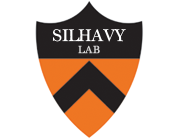Fine-Tuning of σ Activation Suppresses Multiple Assembly-Defective Mutations in Escherichia coli
Type
The Gram-negative outer membrane (OM) is a selectively permeable asymmetric bilayer that allows vital nutrients to diffuse into the cell but prevents toxins and hydrophobic molecules from entering. Functionally and structurally diverse β-barrel outer membrane proteins (OMPs) build and maintain the permeability barrier, making the assembly of OMPs crucial for cell viability. In this work, we characterize an assembly-defective mutant of the maltoporin LamB, LamB We show that the folding defect of LamB results in an accumulation of unfolded substrate that is toxic to the cell when the periplasmic protease DegP is removed. Selection for suppressors of this toxicity identified the novel mutant allele. The mutant DegS protein contains an amino acid substitution at the PDZ/protease domain interface that results in a partially activated conformation of this protein. This activation increases basal levels of downstream σ stress response signaling. Furthermore, the enhanced σ activity of DegS suppresses a number of other assembly-defective conditions without exhibiting the toxicity associated with high levels of σ activity. We propose that the increased basal levels of σ signaling primes the cell to respond to envelope stress before OMP assembly defects threaten cell viability. This finding addresses the importance of envelope stress responses in monitoring the OMP assembly process and underpins the critical balance between envelope defects and stress response activation. Gram-negative bacteria, such as , inhabit a natural environment that is prone to flux. In order to cope with shifting growth conditions and the changing availability of nutrients, cells must be capable of quickly responding to stress. Stress response pathways allow cells to rapidly shift gene expression profiles to ensure survival in this unpredictable environment. Here we describe a mutant that partially activates the σ stress response pathway. The elevated basal level of this stress response allows the cell to quickly respond to overwhelming stress to ensure cell survival.

